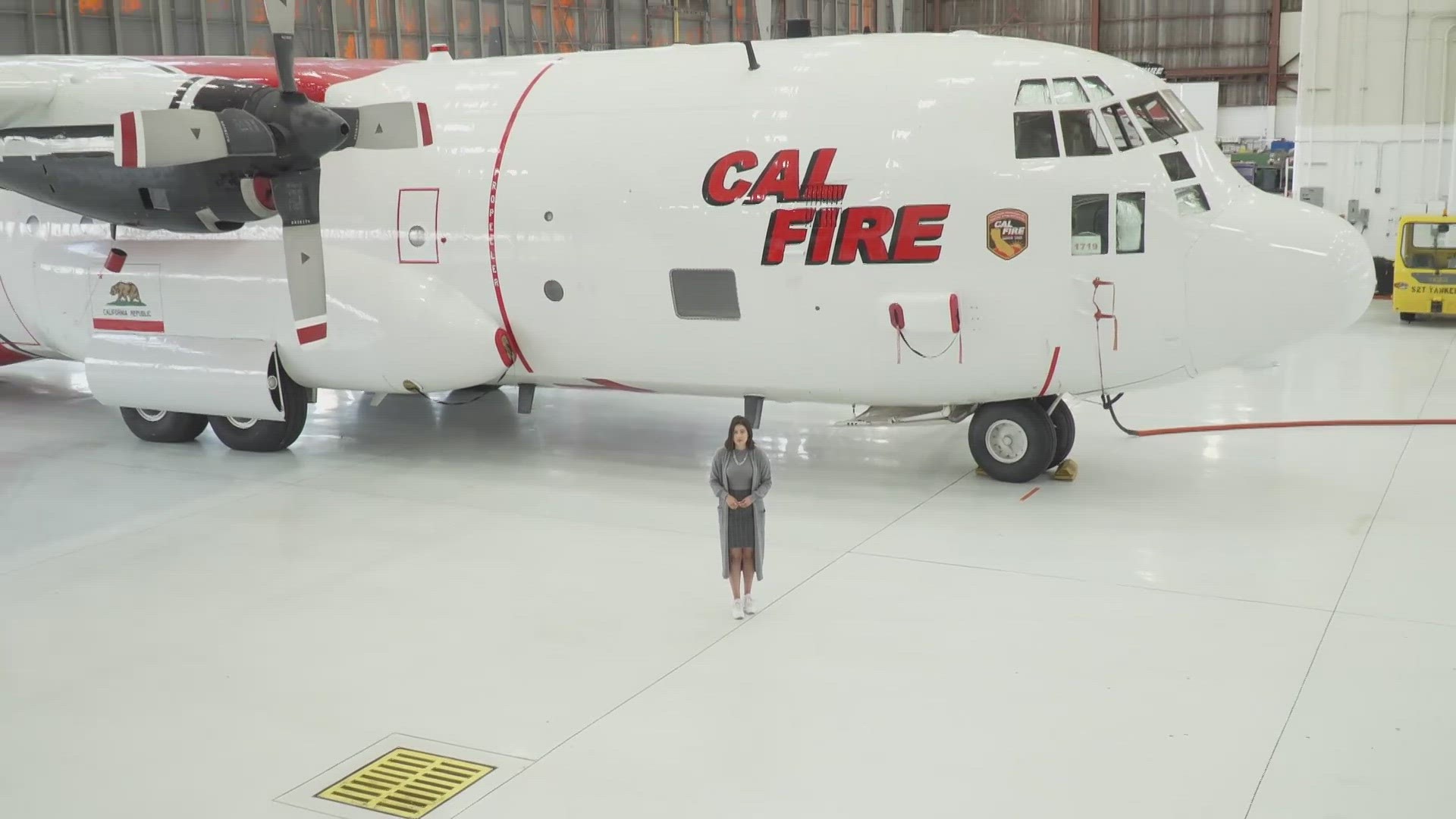SACRAMENTO, Calif. — Cal Fire is replacing its arsenal of firefighting tools ahead of this year’s wildfire season.
Seven planes and 16 helicopters have been added to their toolbox.
Governor Gavin Newsom announced the purchases in August 2022 to combat the issues of climate change. The additions will also make the department more self sufficient rather than having to request resources from the Department of Defense.
Seven C-130 airplanes are being modified to carry fire retardant at McClellan, but none are currently ready. Senior Aviation Officer Marty Buno, who has more than two decades of service with Cal Fire, is overseeing the operation.
“The C-130’s are being transferred to us via the Coast Guard, so there is basically no cost to us except support and maintenance but the Air Force is doing the modifications to it,” said Buno.
Their goal is to get the planes ready as soon as possible, but with no date, ABC10 asked if they would be ready to respond this season.
“We will have the exclusive use tankers that we can use and also have some exclusive use type on helicopters that we can use to augment that. So we’ve added in additional resources to make sure that we can cover the C-130s,” said Buno.
The 4,000 gallon tank in the planes will deliver three times the amount of retardant that the current small planes can.
10 Black Hawk helicopters have also arrived. Re-homed from the military and painted white, the new Fire Hawks are ready to serve.
“Our response times will be quicker; they are faster helicopters, faster aircraft. They can deliver more capacity with water with being a thousand gallons versus traditionally 340 gallons,” said Buno.
Night flights are another new part of the mission.
Last fire season, only one night flight was flown over the Electra Fire in Amador and Calaveras counties.
“The helicopter is an effort to be a multi-mission all risk type platform, so yes, night flying is a capability we are looking to enhance. Last year was our first fire mission at night. This year, we will have three additional bases that will have that capability,” said Buno
This will give crews a cooler environment to work in with less smoke. It gives Cal Fire an eye in the sky to watch where the fire is heading instead of having to wait for the morning hours to see how the fire has grown. But night flying has its own challenges, such as flying in the dark in mountainous terrain.
“Now, they are flying at night under goggles. The safety factor is enhanced, so we have to make sure we have people that are trained properly, that we've tried to bring people in from the military to assist us,” said Buno.
Each Fire Hawk comes with its own $23 million price tag. That’s $368 million by the time all 16 become operational over the next few years. The closest bases to Sacramento where the helicopters will respond from are Hollister, Alma, Columbia and Vina.
Moving forward with Cal Fire, there are plans for more night flights this wildfire season. It takes about 300 hours to train a pilot on the new technology.
WATCH ALSO:



















